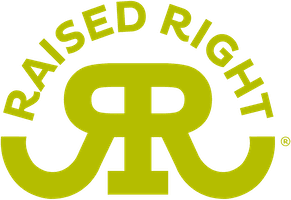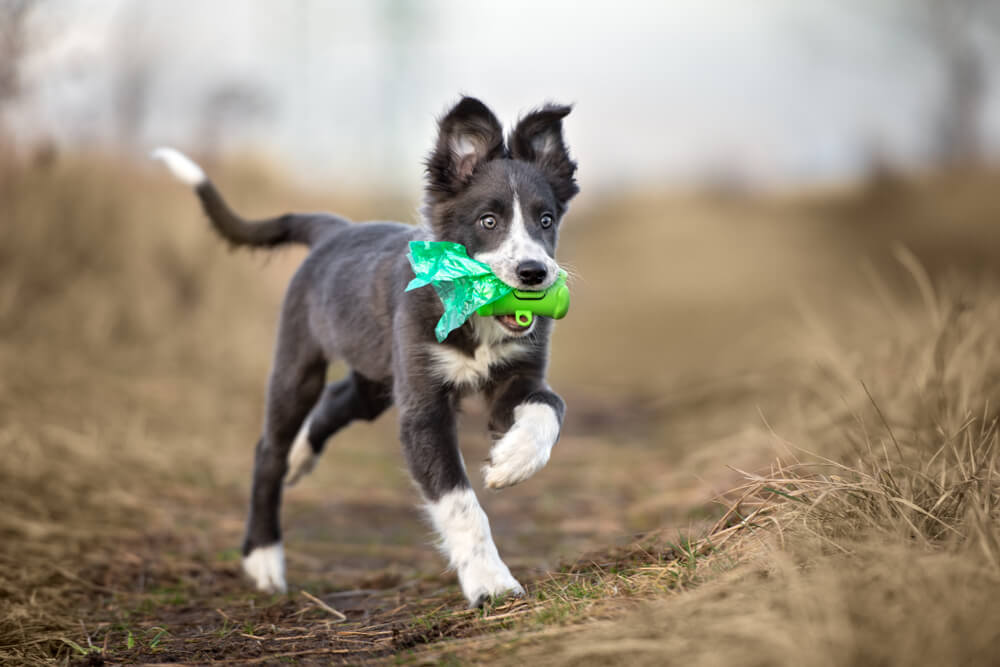
Ever looked at your dog’s poop and thought ‘Eww gross why does it look like that’? Dog poop isn’t the most pleasant thing in the world, but it’s important to know the difference between healthy dog poop and abnormal dog poop. If you take the time to look, there are plenty of clues to be found that could give you an indication of your dog’s underlying health and whether they’re eating the right dog food. And once you get used to what’s normal color, consistency, and appearance for your canine companion, you’ll be able to easily spot when things aren’t quite right.
Dog Poop Chart
This dog poop chart will give you a quick reference tool, helping you decide whether your dog’s poop is supposed to be that color, or whether the consistency is a concern. Of course, there’s bound to be some variation between dogs, so it’s worth getting to know your dog’s normal poop appearance over time.
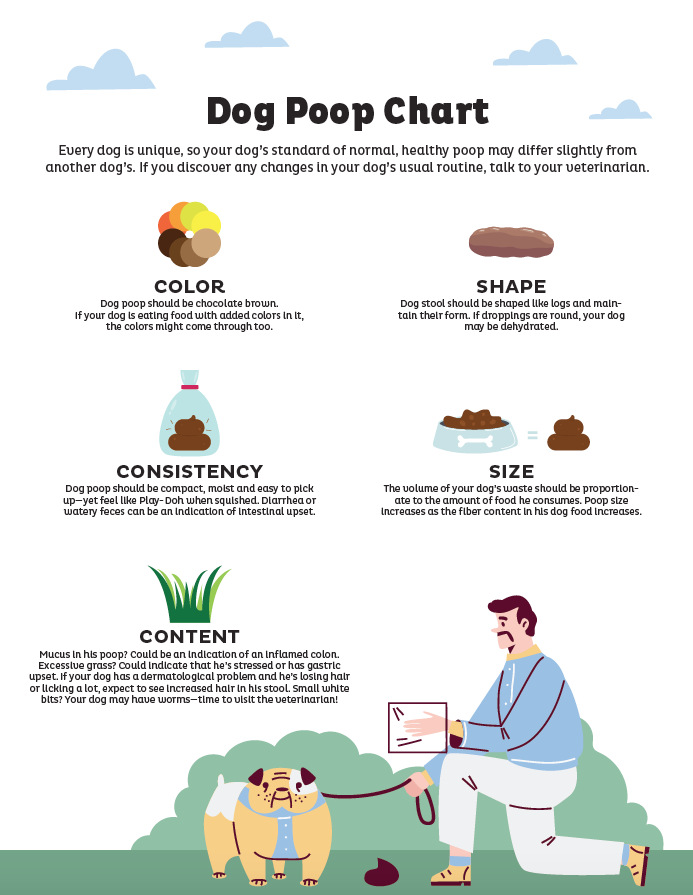
What color should my dog’s poop be?
Normal dog poop should be brown. In some dogs, it may be lighter brown, whereas some dogs have darker brown poop. You might even find that your dog’s brown poop has a bit of an orange tinge to it, this is likely to be normal and related to their dog food.
What if your dog’s poop is red?
If your dog’s poop is red or has red streaks in it, it’s likely to be blood. Bleeding of this type can occur from the lower portion of the gut, from within the anal glands, or from tumors or polyps. As well as growths and anal gland infections, blood could indicate colitis, a bleeding disorder, or gut parasites, so you should contact your veterinarian.
What if your dog’s poop is black?
Black dog poop is called melena and it contains digested blood. This means that the stomach or small intestine is bleeding, or may indicate blood that has been swallowed, then digested. Melena could be a sign of a stomach ulcer, gastroenteritis, or a bleeding disorder and requires an urgent veterinary appointment.
What if your dog’s poop is yellow?
Yellowish poop can sometimes be normal, but if the color of your dog’s poop suddenly changes, it could be a sign of an infection, colitis, or conditions affecting the liver or pancreas.
What shape should your dog’s poop be?
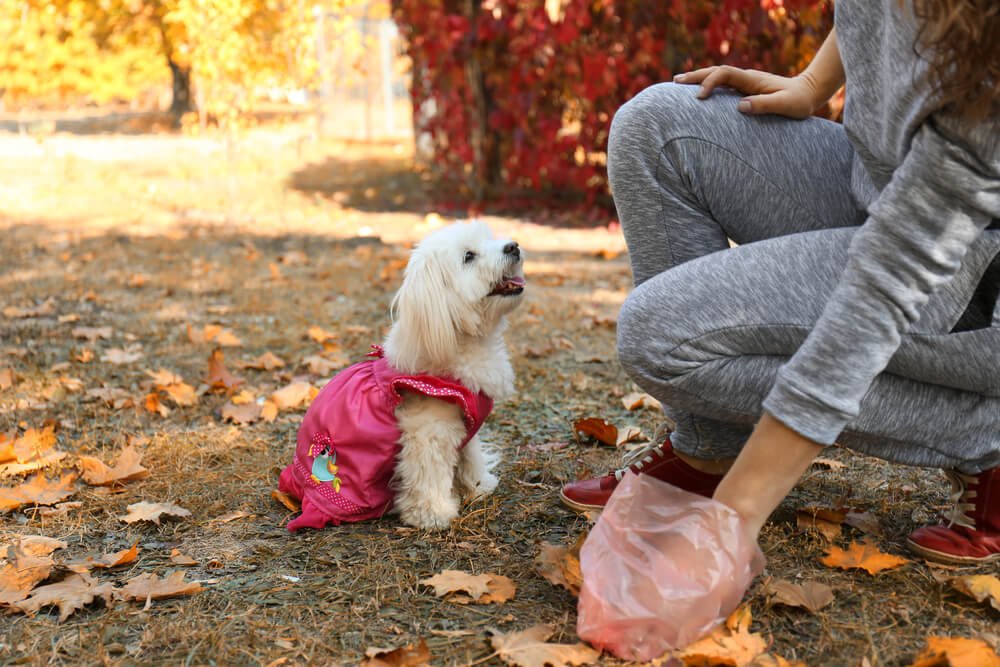
Nuggets or knobbly poop could suggest constipation or dehydration, while shapeless is likely to be diarrhea.
Your dog’s poop should be in the shape of a log or sausage, and it should be a similar size to their rectum so that they don’t have to do too much straining to pass it. Nuggets or knobbly poop could suggest constipation or dehydration, while shapeless is likely to be diarrhea.
What consistency should your dog’s poop be?
Normal dog poop should be formed and should keep its shape when picked up. However, it should still be soft rather than firm and you should be able to press into it easily with your (gloved!) fingers.
What if your dog’s poop is jelly-like?
If your dog’s poop consistency resembles a spiral of ice cream or frozen yogurt from a self-service machine and it wobbles like jelly, your dog may have colitis. Look out for other signs like spots or streaks of blood or mucus and consider switching to blander, limited ingredient dog food.
What if your dog’s poop is watery?
Watery diarrhea can indicate an infection, dietary indiscretion, or a sensitive belly. If your dog is well in themselves, you could try a lighter, bland diet for a day or two. However, if the symptoms don’t improve or they seem unwell you should contact your veterinarian.
What if your dog’s poop is hard?
Dog poop that feels hard or dry is a sign of constipation. It could be that your dog isn’t drinking enough, or perhaps they’ve eaten something they shouldn’t have and it’s struggling to pass. Regardless of the cause, if your dog is passing hard feces consistently, or if they strain without passing anything, you should book a check-up with the veterinarian.
What might you notice in your dog’s poop?
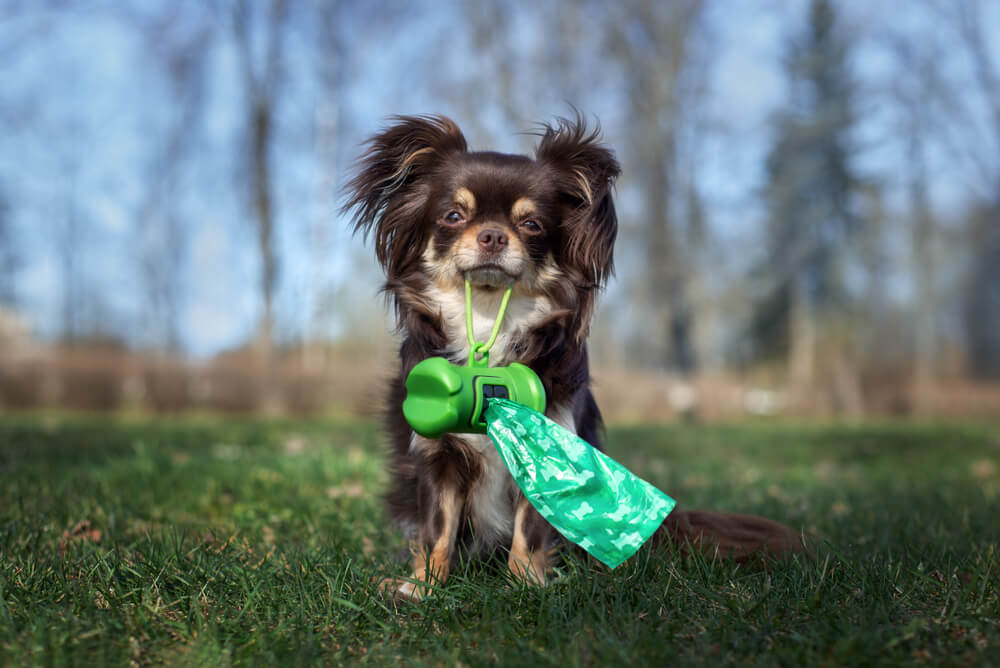
If you’ve not wormed them recently, you might notice live worms in their poop (which means it’s time to speak to your veterinarian).
Aside from blood, there are a few other things you might notice in your dog’s poop. For instance, if they have colitis, you might notice mucus in their poop. On the other hand, if they have eaten something they shouldn’t have, you might notice foreign material like string, plastic, or grass. If you’ve not wormed them recently, you might notice live worms in their poop, which means it’s time to speak to your veterinarian about parasite control.
Summary
It might not be a very appealing idea to spend time looking at your dog’s poop close up, but it’s important to monitor your dog’s poop. After all, the color, consistency, and appearance of your dog’s poop will give you information about their gut health as well as their general health. If you’ve got ongoing concerns about the consistency of your dog’s poop, and a vet has checked for underlying problems, you could try switching them to bland dog food that is easier for them to digest.
FAQ
What does unhealthy dog poop look like?
Dog poop that is runny or doesn’t hold its form is abnormal and could be a sign of a health problem. Other signs of unhealthy dog poop are blood, mucus, foreign material, or a tarry color and consistency.
What does a concerning dog poop look like?
Dog poop that is very hard, very runny, black, or containing blood or mucus is a concern. If you notice any changes to your dog’s poop it’s best to take a sample to show the vet.
Why is my dog’s poop half solid and then runny?
Sometimes a dog’s fecal motion can begin solid, but become soft or runny by the end. This can be associated with excessive straining and may mean a different dog food is needed.
